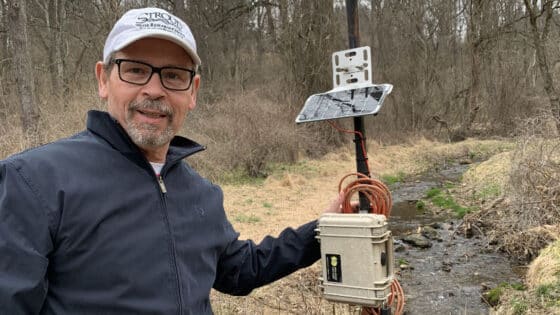Joshi, I. D., N.D. Ward, E.J. D’Sa, C.L. Osburn, T.S. Bianchi, and D. Oviedo‐Vargas. 2018. Journal of Geophysical Research: Biogeosciences 123:2466–2484.
https://doi.org/10.1029/2018JG004391
Abstract
Estuaries have been recognized as important sources of carbon dioxide (CO2) to the atmosphere; however, contributions of these systems to regional and global carbon budgets are not well constrained due to limited information on seasonal and spatial variability. In this study, we use satellite remote sensing to obtain seasonal pCO2 distribution and air‐sea CO2 fluxes in Apalachicola Bay, a national estuarine research reserve located in the northern Gulf of Mexico that receives seasonally varying dissolved organic matter‐rich waters from the Apalachicola River. A combination of time series (2005–2016) and seasonal field observations (2015–2016) of pH and biophysical variables were used to develop seasonal pH‐pCO2 relationships for obtaining surface pCO2estimates and air‐sea CO2 fluxes from Visible and Infrared Imaging Radiometer Suite (VIIRS) ocean color data. Monthly and seasonal maps of pCO2 and air‐sea CO2 fluxes showed a general trend of higher fluxes in winter and summer corresponding to high river flow and warm water temperatures. However, CO2 fixation via photosynthesis and low water temperatures contributed to lower fluxes to the atmosphere in spring and fall, respectively. Throughout the study period, Apalachicola Bay was a net source of CO2 with large seasonal and spatial variability and a mean annual CO2 flux to the atmosphere of 3.4 ± 3.1 mol·m−2·year−1 (9.4 ± 8.5 mmol·m−2·day−1), consistent with fluxes reported for other estuaries. This study demonstrates the critical role that satellite observations can play to improve the estuarine contributions to the global carbon flux estimates.


